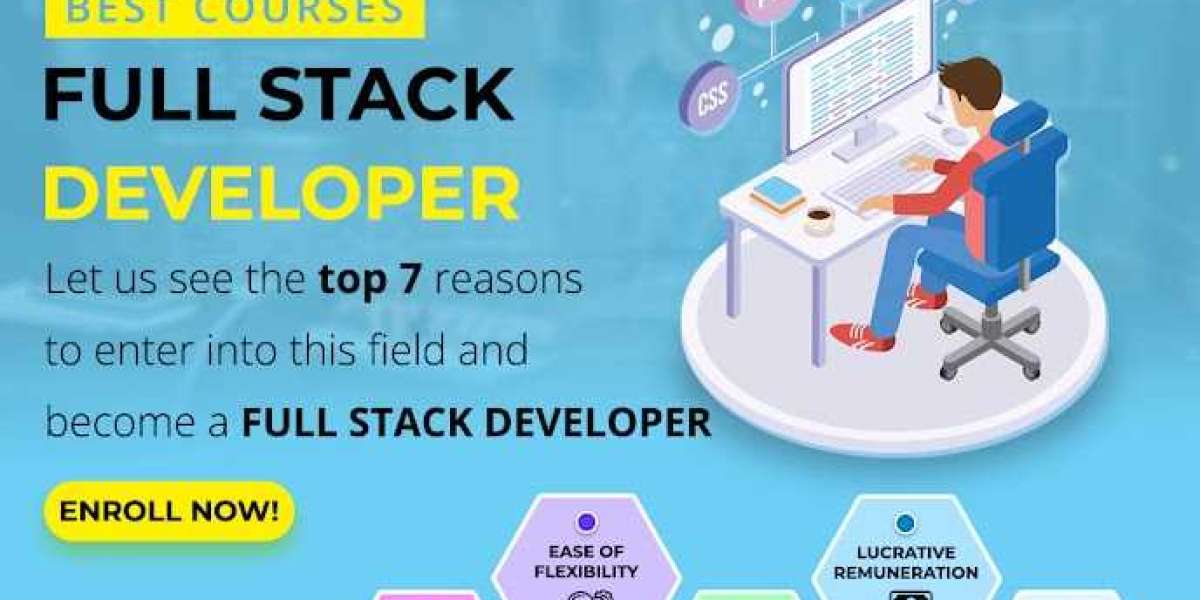In today's digital age, the demand for versatile and skilled web developers has reached unprecedented heights. The evolution of technology has led to the emergence of full stack web development as a crucial skillset. A full stack web developer possesses the expertise to handle both front-end and back-end development, creating seamless and fully functional web applications. This article delves into the world of full stack web development courses, shedding light on their significance, key components, and benefits.
Understanding Full Stack Web Development
Full stack web development involves the mastery of both front-end and back-end technologies, enabling developers to build end-to-end web applications independently. The term "full stack" refers to the various layers or components of a web application, which include the presentation layer (front-end) and the data management and logic layer (back-end).
Components of a Full Stack Web Development Course
A comprehensive full stack web development course typically covers a wide array of programming languages, frameworks, and tools. Here's a breakdown of the key components:
1. Front-End Development: Front-end development focuses on creating the visual elements of a website that users interact with directly. Core technologies and concepts covered in this aspect of the course include:
- HTML and CSS: Building the structure and styling of web pages.
- JavaScript: Adding interactivity and dynamic behavior to websites.
- Front-End Frameworks: Learning frameworks like React, Angular, or Vue.js to simplify complex UI development.
- Responsive Design: Ensuring the website works seamlessly across different devices and screen sizes.
2. Back-End Development: Back-end development deals with server-side programming, databases, and server management. Key components in this area include:
- Server-Side Languages: Mastering languages like Node.js, Python, Ruby, or PHP for handling server-side logic.
- Databases: Learning to work with databases such as MySQL, MongoDB, or PostgreSQL for data storage and retrieval.
- API Development: Creating and integrating APIs (Application Programming Interfaces) to facilitate communication between the front-end and back-end.
3. Databases and Storage: Understanding various database types, their differences, and how to manage data efficiently is crucial. This involves exploring relational databases, NoSQL databases, and understanding concepts like data modeling and normalization.
4. Version Control: Learning version control tools like Git is essential for collaborative development. Version control ensures efficient code management, collaboration, and the ability to revert to previous versions when needed.
5. Deployment and Hosting: Developers need to understand how to deploy their web applications to servers and manage their hosting. Learning about server configurations, cloud platforms like AWS or Heroku, and deploying with containers like Docker is vital.
Benefits of Full Stack Web Development Courses
Versatility: Full stack developers are highly versatile as they can handle both front-end and back-end tasks. This skillset makes them valuable assets in various projects and organizations.
Cost and Time Efficiency: In smaller teams or startups, having a developer who can handle multiple aspects of the project can save time and reduce costs.
Holistic Understanding: Full stack developers have a holistic view of web development, allowing them to design and implement solutions that are efficient, scalable, and well-coordinated.
Independence: With proficiency in both front-end and back-end, full stack developers can work independently to create entire web applications without heavy reliance on other team members.
Career Opportunities: The demand for full stack developers continues to grow, offering abundant career opportunities and competitive salaries.
Conclusion
Enrolling in a full stack web development course is a transformative step toward becoming a versatile and sought-after developer. The comprehensive curriculum, covering both front-end and back-end technologies, empowers learners to craft seamless and feature-rich web applications. As technology continues to advance, the role of full stack developers remains pivotal in shaping the digital landscape. So, whether you're a beginner looking to enter the world of web development or an experienced developer aiming to broaden your skillset, a full stack web development course is your gateway to success in the dynamic field of web development.


